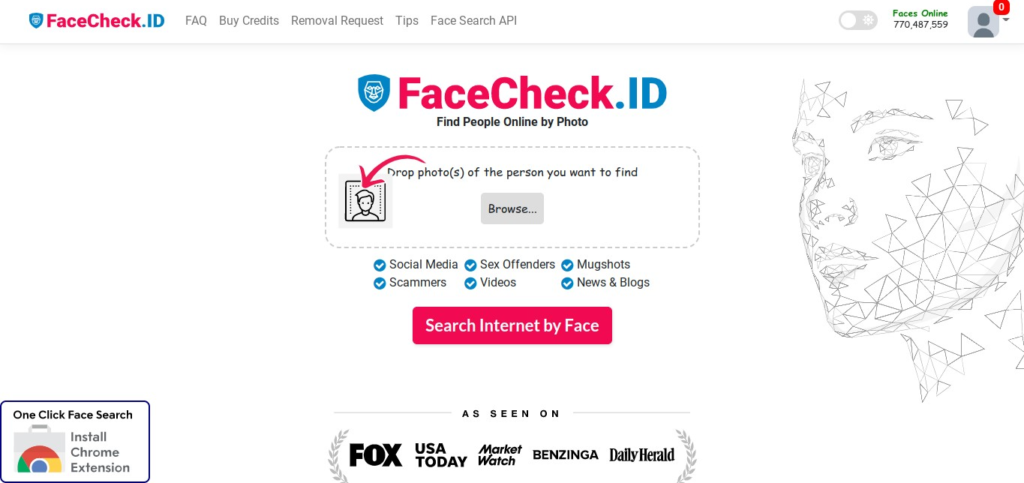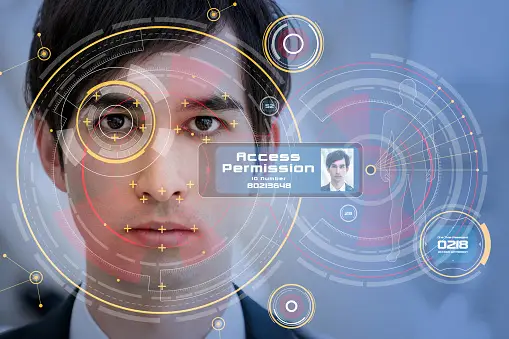Ensuring identification processes are both secure and effective has become critical. FaceCheck ID stands out as a novel approach in this field of work. This cutting-edge facial recognition technology expedites the verification process and improves security in multiple industries. This AI Tool employs advanced algorithms to properly identify people based on their facial traits. It can be used to unlock cell phones, secure financial transactions, and improve border security. This introduction explores the features, uses, and consequences of FaceCheck ID, examining how it can revolutionize identity authentication and balancing the benefits and drawbacks of its implementation.
What is FaceCheck ID?

Advanced facial recognition technology, such as FaceCheck ID, is designed to improve security and streamline the identification process. This technology provides accurate and speedy identification verification by comparing face characteristics stored in a database with those acquired by a camera using sophisticated algorithms. This is becoming more and more essential in many industries, with uses ranging from financial transactions and border security to smartphone unlocking.
How Does FaceCheck ID Work?
FaceCheck ID operates by analyzing various facial features such as the distance between eyes, nose shape, and jawline contours. Here’s a step-by-step breakdown of its working mechanism:
- Image Capture: A camera captures the image of a face.
- Feature Extraction: The system identifies and extracts key facial features.
- Comparison: These features are compared against a database of known faces.
- Matching: The system checks for a match and verifies the identity of the individual.
Where Can FaceCheck ID Be Used?
FaceCheck has a wide range of applications across different industries:
- Smartphones: Unlocking devices and authorizing app access.
- Banking: Verifying identities for secure transactions.
- Airports: Enhancing security through biometric verification.
- Law Enforcement: Identifying suspects and missing persons.
- Retail: Personalizing customer experiences and reducing fraud.
What Are the Pros and Cons of FaceCheck ID?
Pros
| Pros | Description |
| Enhanced Security | FaceCheck ID provides a robust layer of security, reducing unauthorized access. |
| Convenience | Quick and easy identification process without the need for physical IDs. |
| Accuracy | High level of accuracy in identifying individuals, minimizing errors. |
| Non-Intrusive | Users can be identified without any physical contact. |
| Scalability | Can be easily integrated into various systems and scaled as needed. |
Cons
| Cons | Description |
| Privacy Concerns | Potential misuse of facial data and surveillance issues. |
| High Costs | Implementation and maintenance can be expensive for large-scale systems. |
| Technical Limitations | Can be affected by changes in appearance (e.g., glasses, facial hair) and lighting. |
| Bias and Errors | Potential for racial and gender biases in recognition accuracy. |
| Data Security | Risks associated with the storage and protection of biometric data. |
What Are the Security Implications of FaceCheck ID?
Face ID significantly enhances security by ensuring that only authorized individuals can access specific services or areas. However, it also raises several security concerns:
- Data Breaches: Biometric data, if compromised, can lead to severe privacy violations.
- Spoofing: Attempts to deceive the system using photographs or videos.
- Regulatory Compliance: Ensuring the technology adheres to privacy laws and regulations.
How Does FaceCheck ID Affect Privacy?
The use of FaceCheck ID can lead to privacy concerns as it involves the collection and storage of personal biometric data. Key issues include:
- Surveillance: Continuous monitoring can lead to a loss of anonymity.
- Data Misuse: Risks of data being used for purposes other than intended.
- Consent: Ensuring individuals are aware of and consent to the use of their facial data.
What Are the Future Trends for This Tool?
FaceCheck ID is expected to evolve with advancements in AI and machine learning. Future trends include:
- Improved Accuracy: Enhanced algorithms to reduce biases and errors.
- Integration with AI: Combining facial recognition with AI for predictive analytics.
- Broader Applications: Expanding into new areas like healthcare and education.
- Regulatory Frameworks: Development of stricter regulations to safeguard privacy.
Conclusion
FaceCheck ID is a powerful tool with the potential to revolutionize security and identification processes. While this offers many benefits, including increased security and convenience, it also presents significant challenges, particularly with respect to privacy and ethical considerations. As the technology continues to develop, it will be crucial to address these challenges to ensure that Face ID can be used responsibly and effectively.



